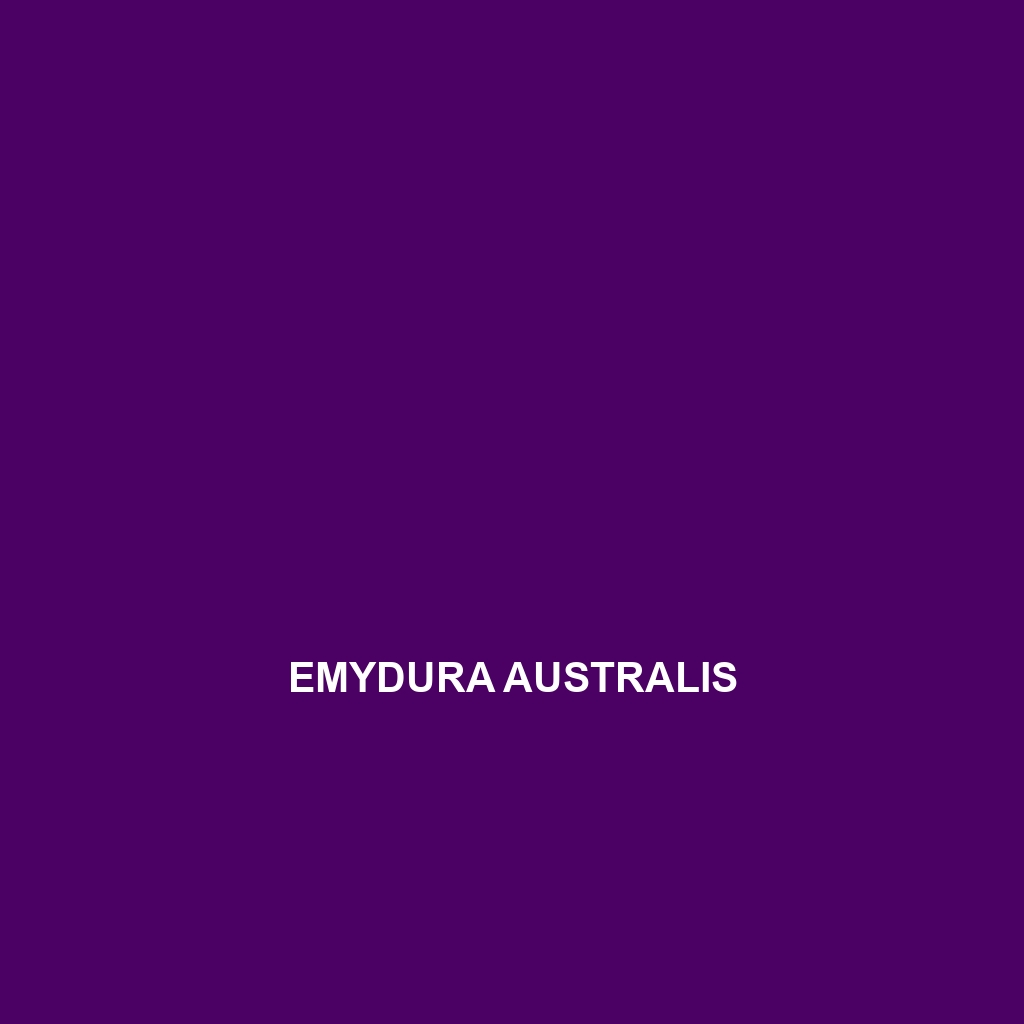Common Name
Emydoidea blandingii
Scientific Name
Emydoidea blandingii
Habitat
The Blanding’s turtle (Emydoidea blandingii) primarily inhabits a variety of freshwater environments, predominantly located in the northeastern and central regions of the United States and parts of Canada. This semi-aquatic turtle prefers habitats such as wetlands, shallow marshes, and slow-moving rivers. The species thrives in temperate climates where it is often found in areas with ample aquatic vegetation and sandy banks that provide suitable nesting sites. The presence of mud and muck at the bottom of these bodies of water is also crucial as it serves as a vital source for foraging and shelter. Given these conditions, the Blanding’s turtle is sensitive to habitat degradation caused by urban development, agriculture, and pollution, which impact aquatic ecosystems.
Physical Characteristics
Emydoidea blandingii is recognized for its distinctively bright yellow throat and chin, along with a dome-shaped, smooth shell that typically measures between 6 to 10 inches in length. The carapace, or shell, is dark brown to black with mottled yellow markings, providing effective camouflage against the aquatic environment. One of the unique features of the Blanding’s turtle is its hinged plastron, which allows it to close its shell tightly, offering enhanced protection from predators. The body structure is streamlined, facilitating movement through water, and its limbs are well-adapted for both swimming and walking on land.
Behavior
Diet
Emydoidea blandingii is considered an omnivore, boasting a versatile diet that includes various aquatic plants, mollusks, insects, and small fish. Their feeding patterns are opportunistic, often foraging in shallow waters and on land for available food sources. The turtle’s strong jaws allow it to break through tough plant material, making it an effective herbivore as well. Their diet can vary significantly depending on the season and availability of food within their habitat.
Reproduction
The reproductive cycle of Emydoidea blandingii typically occurs between late spring and early summer. During mating, males display courtship rituals which may involve swimming in circles around the female and exhibiting head bobs. After successful mating, females seek out sandy or loose soil areas for nesting, laying anywhere from 5 to 15 eggs in a clutch. The eggs require a temperature-sensitive incubation period of approximately 75 to 80 days, after which hatchlings emerge and make their way to the nearest water source. Parental care is absent in this species, leading the young turtles to fend for themselves from the moment they hatch.
Conservation Status
Currently, Emydoidea blandingii is listed as a species of Special Concern in several states and is considered vulnerable in areas where its population faces significant threats. Habitat loss, particularly due to urban development and agricultural expansion, poses the greatest risk to this species. Conservation efforts are underway that include habitat restoration, protective regulations around nesting sites, and public education initiatives aimed at reducing human-wildlife conflict. Ongoing studies aim to monitor populations and assess the effectiveness of these conservation measures.
Interesting Facts
One of the most fascinating aspects of Emydoidea blandingii is its longevity; these turtles can live for over 70 years in the wild, making them one of the longer-lived species among freshwater turtles. Additionally, they are often referred to as “trademark turtles” because their unique and vibrant appearances can easily attract the attention of wildlife enthusiasts and photographers alike. Despite their secretive nature, Blanding’s turtles are recognized for their ability to travel long distances to locate suitable habitats.
Role in Ecosystem
As an integral part of their ecosystem, Emydoidea blandingii plays several vital roles. They contribute to the health of their aquatic habitats by helping maintain a balance in the food web, acting as both predator and prey. Their omnivorous diet aids in the control of aquatic plant populations and the cycling of nutrients within wetland environments. Furthermore, the turtle serves as an ecological indicator species, meaning that changes in their population can reflect the overall health of their ecosystem. Preserving the Blanding’s turtle is crucial not just for their survival, but for maintaining the biodiversity and integrity of the habitats they occupy.
